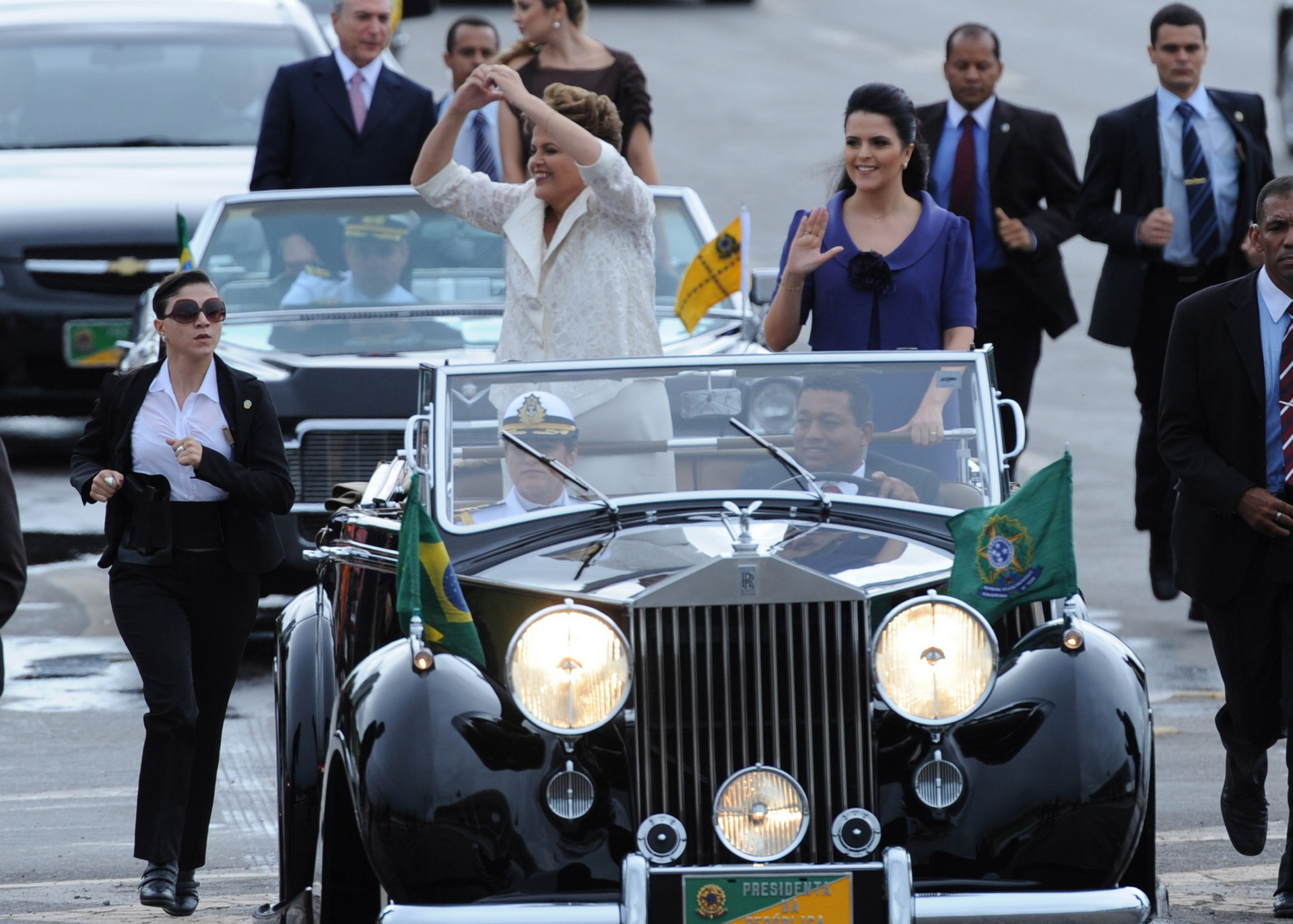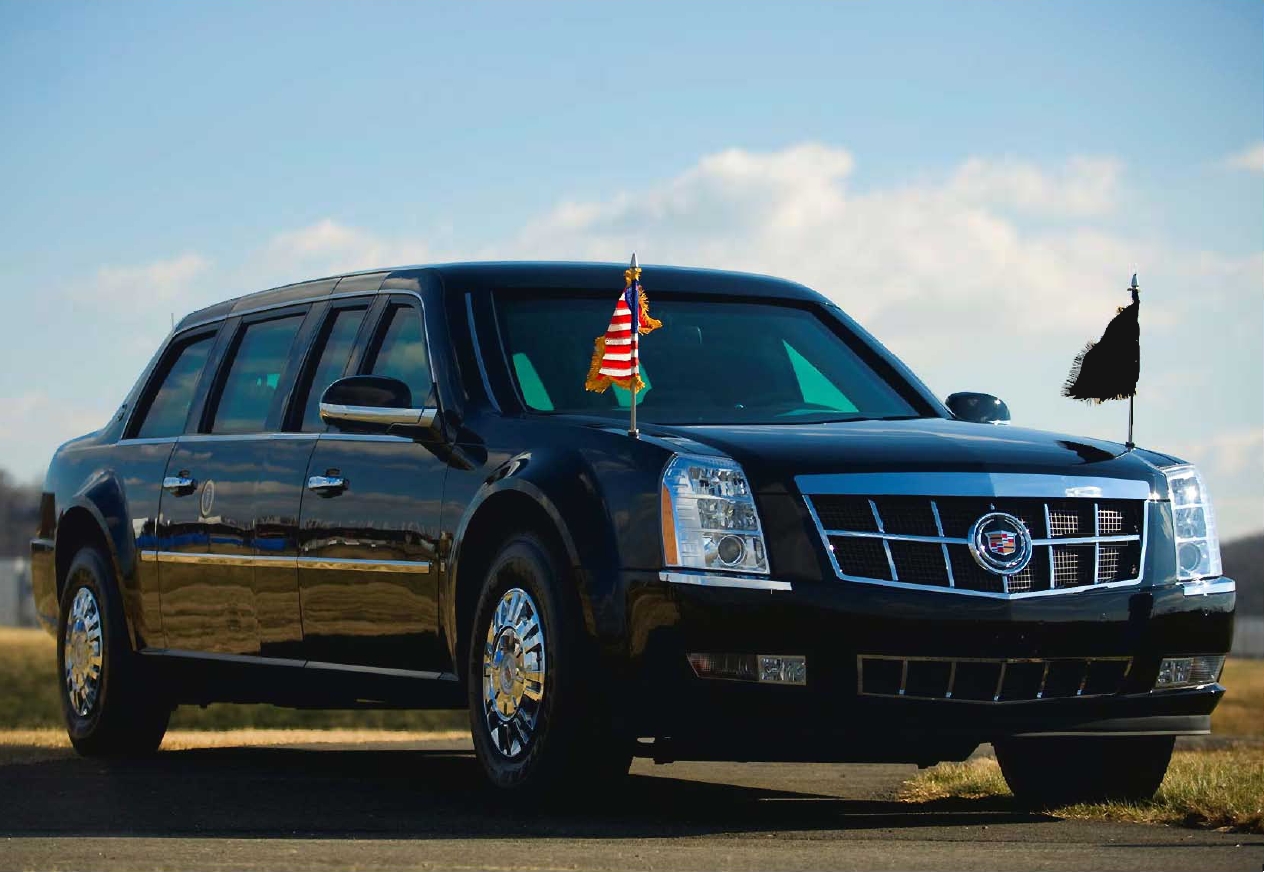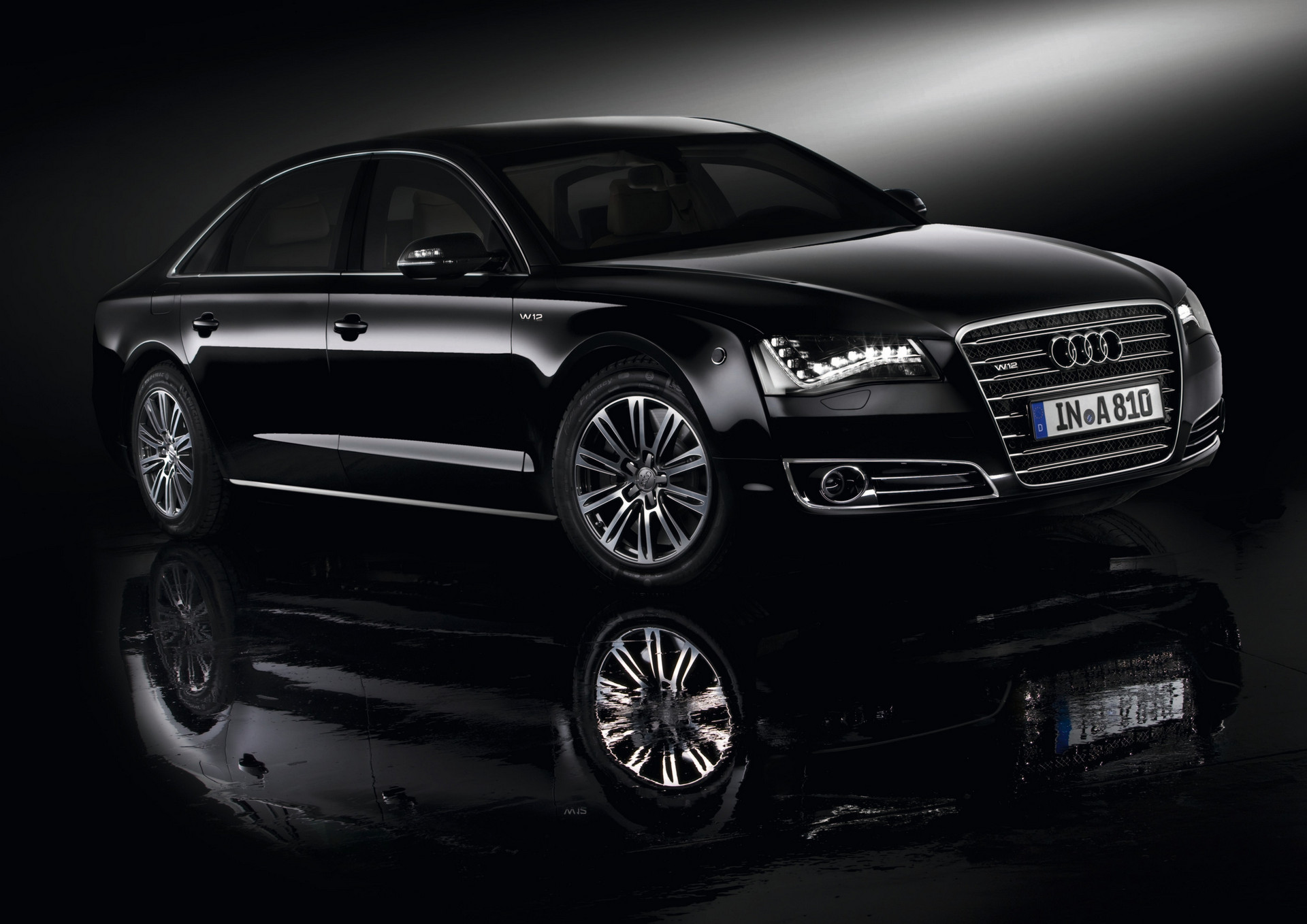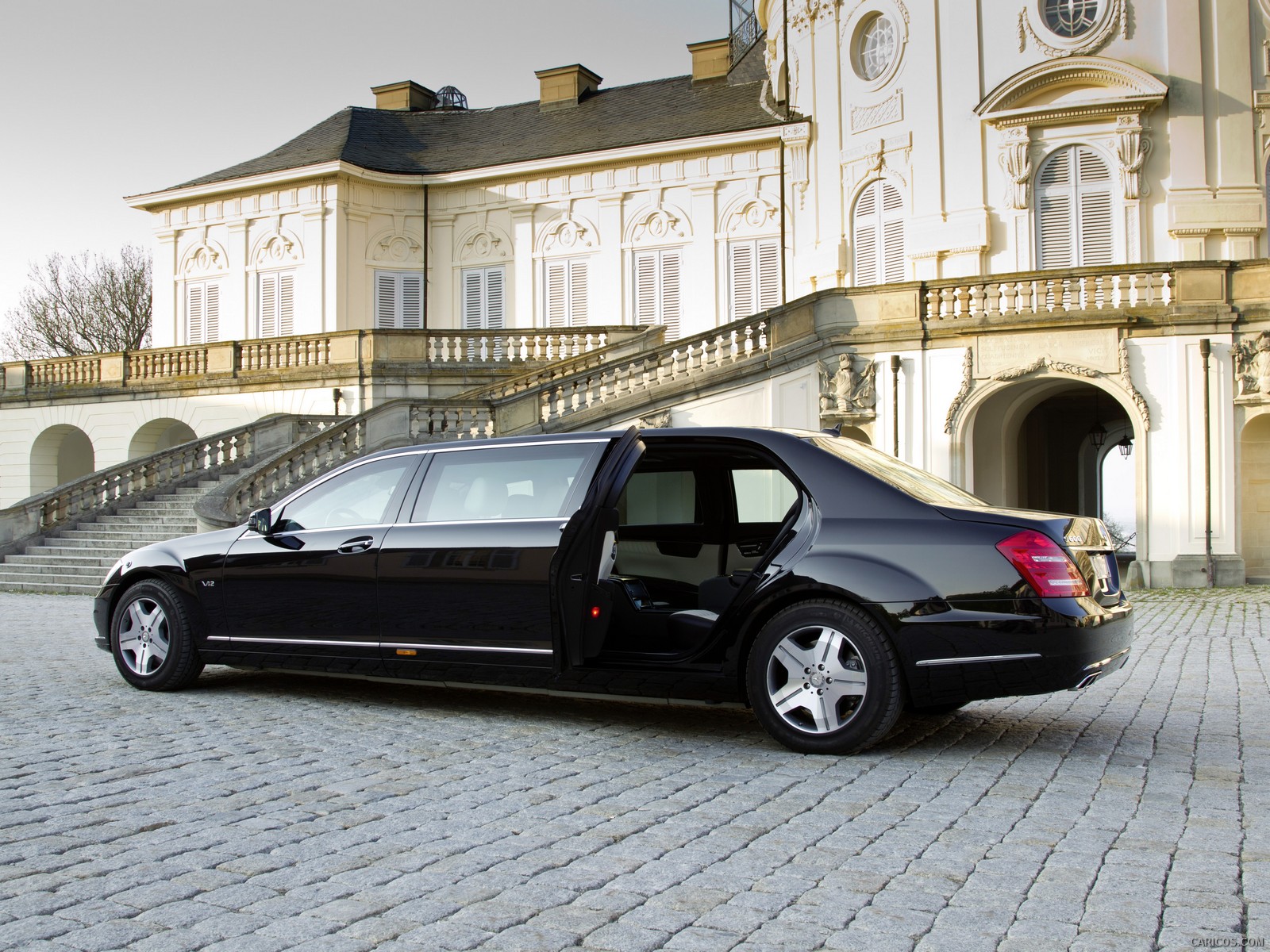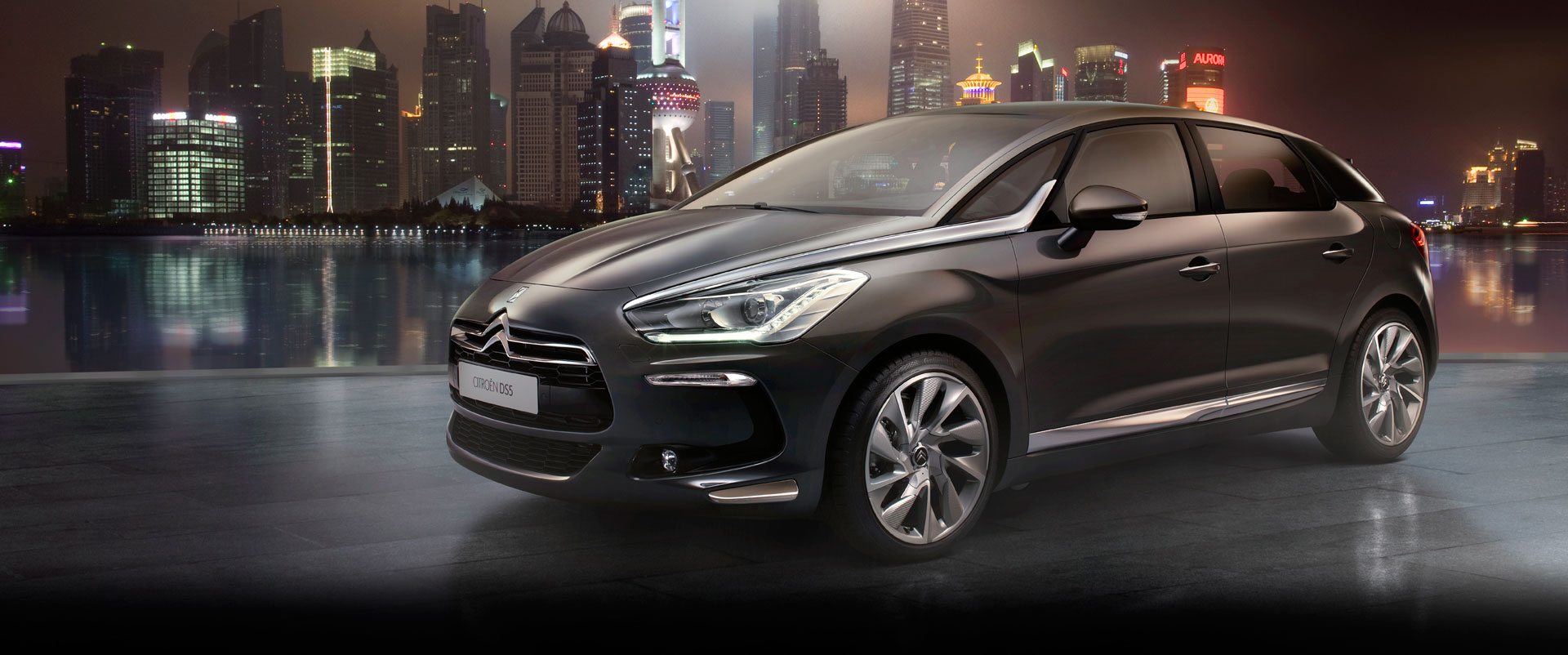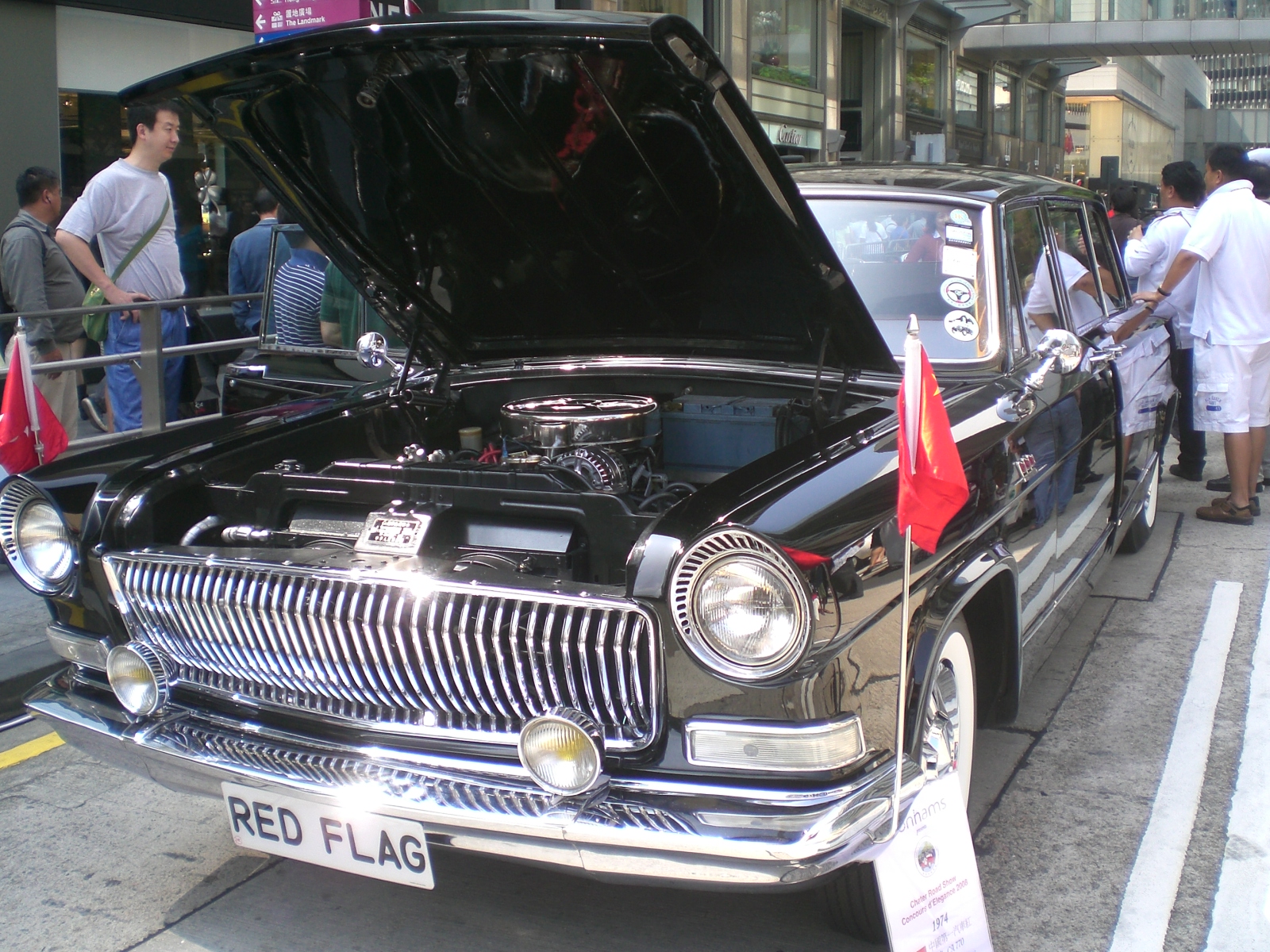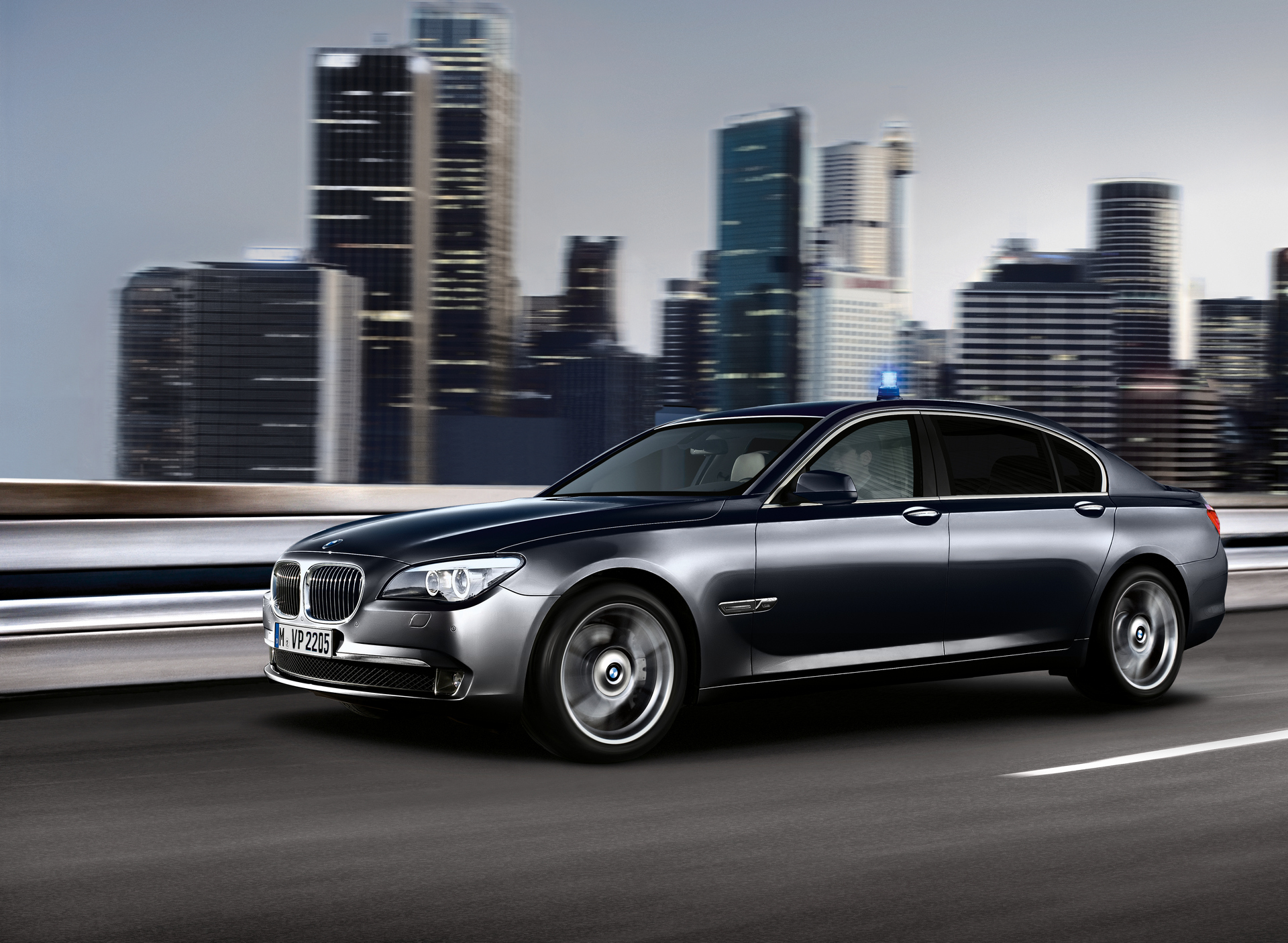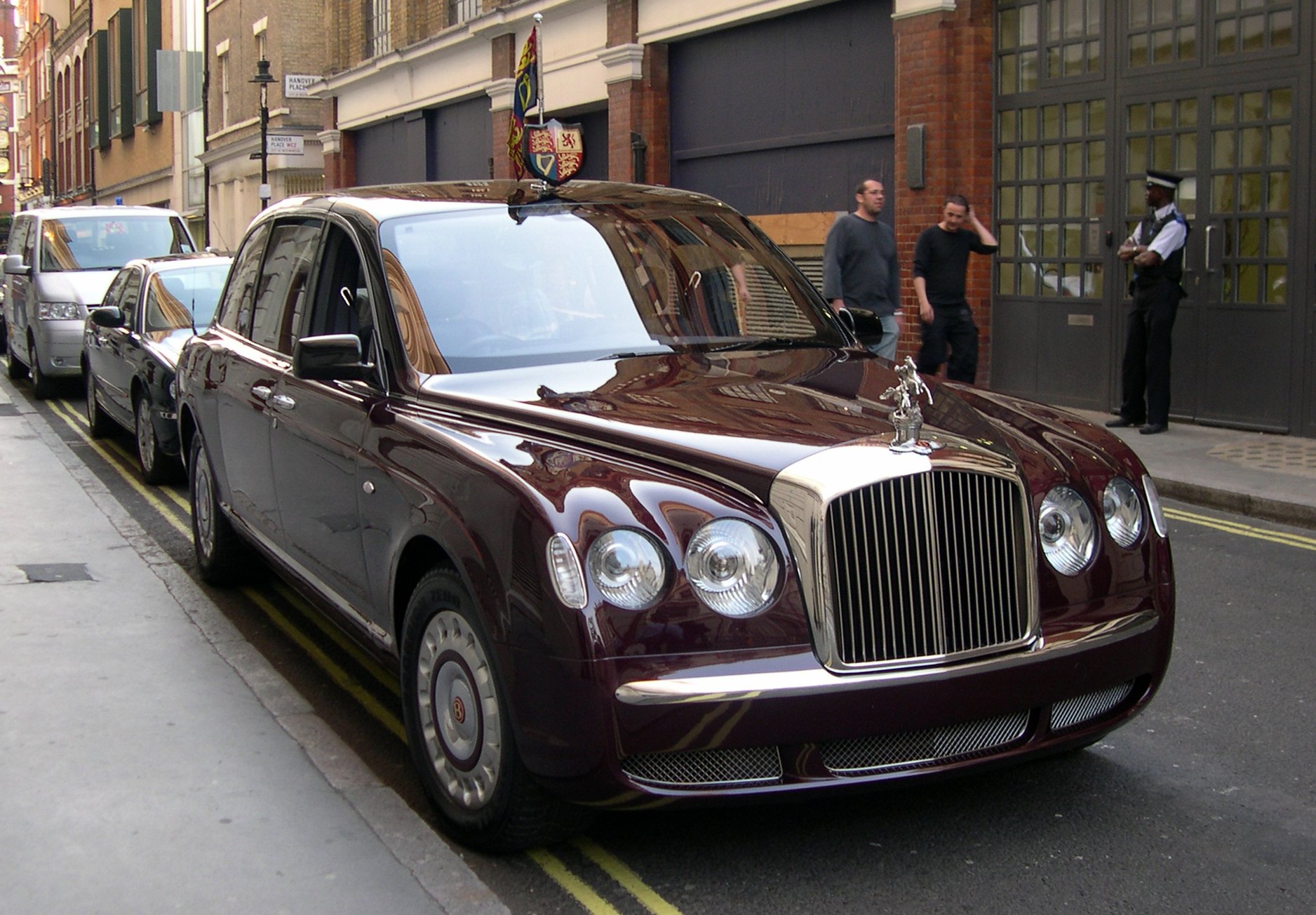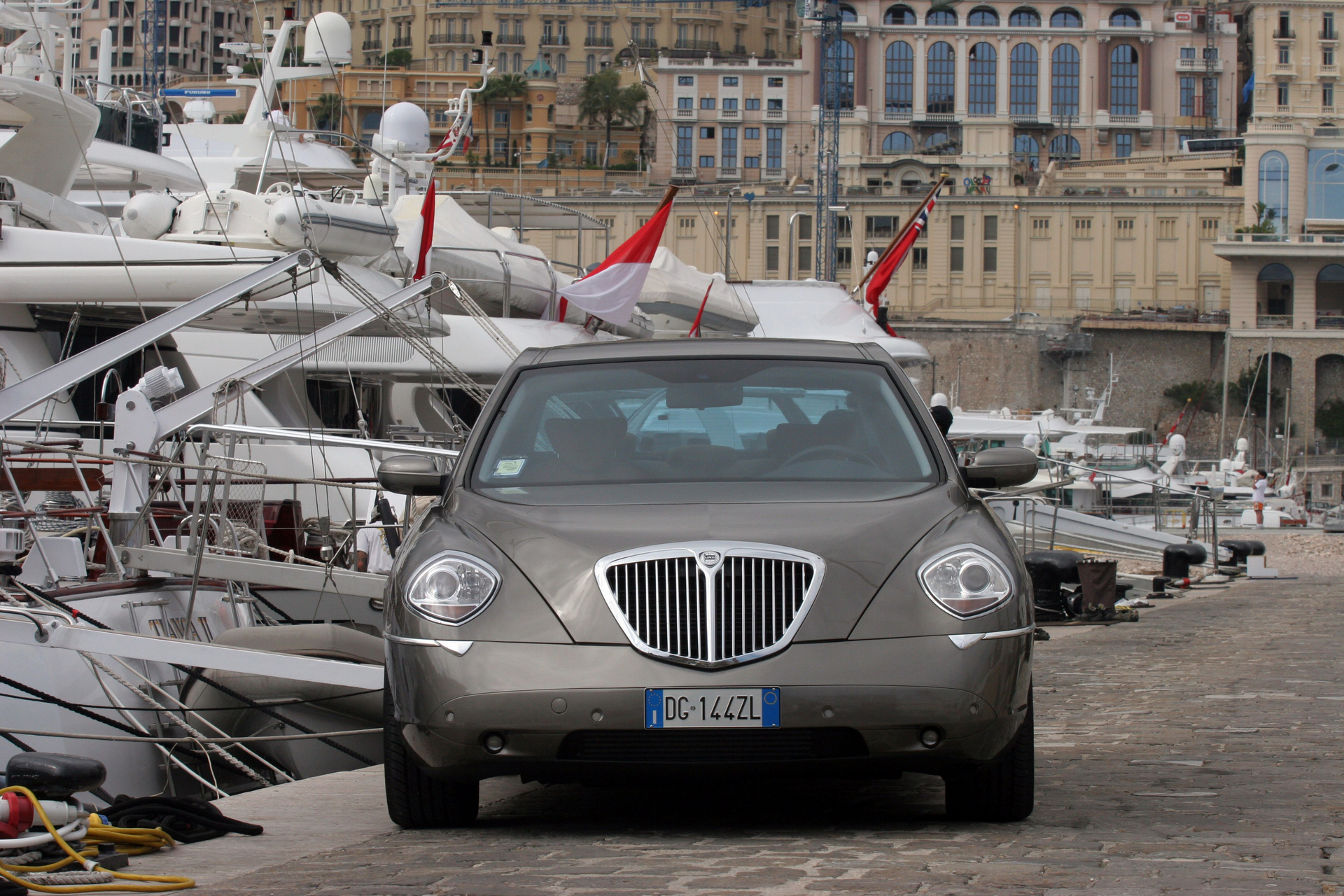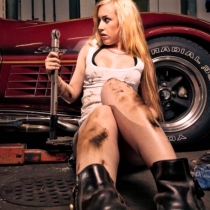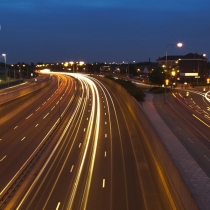Do you want to know, what cars do the world leaders use? Today Carrrs.com gives you an opportunity to look at 12 of them.
Cadillac One — President of the United States Barack Obama
Since the late 1930s, the Federal government of the United States has specially commissioned vehicles for presidential use, often specifying advanced communications equipment, special convenience features, armor plating, and defense countermeasures. American cars are traditionally chosen for the role. The most recent vehicle to be customized as the presidential car is a Chevrolet Kodiak-based, Cadillac-badged limousine often referred to as Cadillac One.
Audi A8 L Security — Chancellor of Germany Angela Merkel
The Audi A8 L Security assumes a unique position in its segment. Its quattro drive makes it the only luxury sedan with an all-wheel drive system that is offered directly from the manufacturer as an armored high-security vehicle. Thanks to the high share of aluminum in the body, the vehicle’s weight is relatively low. Nonetheless, it can handle a maximum payload of 600 kg (1,322.8 lb), which is the best figure in the competitive field.
Two engines are available for the high-security sedan. The 4.0 TFSI, a biturbo V8, has a power output of 320 kW (435 hp) and produces 600 Nm (442.5 lb-ft) of torque. The naturally aspirated W 12 FSI offers 368 kW (500 hp) and 625 Nm (461.0 lb‑ft) of torque. Its torque performance is strong, and its top speed is electronically governed to 210 km/h (130.5 mph) – a limit set in consideration of the tires that possess exceptional emergency flat-running properties. The entire chassis and the quattro permanent all-wheel drive are specifically designed to meet the high security requirements.
Mercedes Pullman S600 Guard — President of Russia Vladimir Putin
This state limousine is fascinating for its elegant combination of necessary tradition and pioneering innovations. The distinguished size, timeless elegance and all-round highest protection of Mercedes-Benz are the hallmarks of this impressive vehicle.
The Pullman extends 1.5 metres beyond the long-wheelbase version of the S-Class and embodies historical dimensions. The higher roof for entering the vehicle and the particularly long wheelbase complete an appearance which is perfectly suited to state-related occasions. The highest possible protection is not a luxury but instead a significant element of this state limousine. It meets the requirements of the highest protection class, VR6/VR7. The principle of integral protection ex factory has been perfected in this vehicle.
Fine woods and high-quality leather, masterful workmanship and the most state-of-the-art communication and entertainment systems make for the highest level of comfort.
The rear of the vehicle with its vis-à-vis seats is generously sized and can be separated from the first row using an optoelectronic partition – for a dignified ambience and discreet discussions.
Citroen DS5 — President of France François Hollande
The DS 5 is a compact executive car designed and developed by the French automaker Citroën that was launched for the European market in November 2011. It is the third model in the new premium sub-brand DS and runs alongside its mainstream cars.
The DS5 mixes hatchback and estate styling resembling a shooting-brake. It is 4,530 mm (178.3 in) long and 1,871 mm (73.7 in) wide, dimensions that are similar to those of the Lancia Delta. This is hardly a coincidence: the DS5 is based on the PF2 platform as 3008 is too, not on the C5 as its name would imply.
Like the original concept car, its interior is heavily aviation inspired and available with two centre consoles – one of which is located on the roof directly above the other. With a head-up display in front of the driver, the cabin is designed to resemble a jet aeroplane. Emphasising its links to aviation, and the original Citroën DS model, the carmaker recreated an old photoshoot of the car with Concorde.[6]
Buyers can choose between a turbocharged petrol, two diesel engines and PSA’s diesel-electric Hybrid4.[7] It marries a 163 hp 2.0 HDi diesel engine with a 37 hp (28 kW) electric motor mounted on the rear axle and sends the power to all four wheels as it is needed. Depending on trim level, this powertrain emits 99g/km or 107g/km CO2, and the car can drive on electricity alone if the battery is sufficiently charged. It is also worth noting that the DS5 will be the first Citroën with a hybrid drivetrain, and the first production car with a diesel-electric hybrid drivetrain.
Jaguar XJ Sentinel — Prime Minister of the United Kingdom David Cameron
The vehicles currently used are armoured, custom built Jaguar XJ Sentinel supercharged 5.0-litre V8 models.[2][3] Prime Ministerial and ministerial limousines are operated and administered by the Government Cars Agency, an executive agency of the Department for Transport, and stored and maintained at 10 Downing Street. The cars are driven by specially trained UKSF close protection drivers, and are escorted by unmarked Range Rovers and Protection Command officers.
The current model fleet was first seen in use on 13 May 2010 when newly appointed Prime Minister David Cameron arrived at 10 Downing Street.
Many details are classified, but the current Jaguar models are estimated to have cost up to £300,000. They feature a number of security features, including a 13 mm explosive resistant steel plate underneath the body, titanium- and Kevlar-lined cabins, armoured windows with bulletproof polycarbonate toughened glass, run flat-tyres and ‘gun ports’ to enable bodyguards to return fire at any attackers. The cars are also equipped with an independent, self-contained oxygen supply to protect the Prime Minister and other passengers against chemical or biological attack. The vehicle can also release tear gas and other crowd dispersants.
The car features state-of-the-art communication and conferencing systems, high definition televisions, night vision, as well as adjustable, heated and cooled rear massage seats, and a Bowers & Wilkins 1200-watt, 20-speaker Dolby 7.1 surround-sound system. The vehicle is B7 level armoured, and is understood to be capable of withstanding the blast of 15 kg equivalent TNT and sustained attack by a variety of other armour-piercing weapons.
The car has a 5.0-litre supercharged petrol engine producing 503 bhp,[8] with a top speed of 121 mph and is capable of reaching 62 mph (100kmh) from stationary in 9.4 seconds, slower than the original given the substantially greater weight of the vehicle.
FAW Hong Qi HQE — President of the People’s Republic of China Xi Jinping
The Hongqi HQE (紅旗HQE) is a large four-door limousine built by FAW Hongqi. Released in 2009, it is the first Chinese-built V12 cylinder engine-equipped luxury car. As Hongqi’s most advanced top-of-the-line vehicle type, the HQE will serve as the high-end vehicle for VIPs and high-ranking national officials. The HQE was designated the presidential vehicle for paramount leader Hu Jintao’s troop review for the People’s Republic of China National Day 60th anniversary celebration. The production model of the HQE is called L7 (short wheel base) and L9 when the mass production began in 2013.
Based on the HQD concept car, the HQE is completely hand-built. The body comprises a rectangular section of galvanized steel with square edged exterior panels mounted on a Toyota Land Cruiser Prado-derived chassis, and the outward appearance and detailing contains aspects of Chinese styling. Dimensionally it is 6.4 meters long, 2.05 meters wide, and 1.72 meters high. The HQE is priced at over 3,000,000 RMB or approximately US$439,300 (as of 2009). An armoured version of the car is also available. The Hongqi was designed at the FAW R&D facility in Changchun. The design team was staffed jointly by FAW and Magna Steyr, and contained members from China, Austria, the United Kingdom and the United States.
The HQE is powered by an independently researched and developed aluminium V12 cylinder engine of Chinese design (designation CA12VG), with a displacement of 6.0 liters and producing 300 kW (400 hp) at 5600 rpm and 550 N m (405 lb·ft) of torque at 4400 rpm.
BMW 7-Series — Prime Minister of India Narendra Modi
BMW is the first manufacturer to offer a car that is fully compliant with the requirements of the class VR7 ballistic protection standard (tested as per BRV 2009 guidelines). At the same time, the BMW 7 Series High Security delivers an unforgettable driving experience. Because the one thing you never get from BMW is compromises.
The security functions of the BMW 7 Series High Security are designed around the form of the standard vehicle. This keeps the vehicle as discreet as possible while ensuring that the overall harmony of the design – the dynamic proportions, the sculptural surfaces, the elegant lines – remains unaffected. The custom-manufacturing process ensures that the security modifications are incorporated to the highest standards imaginable and that all the customer’s individual wishes are taken care of. The optimised armour plates are made from an incredibly strong special steel and fit the bodywork of the car like a second skin.
Perfect protection means being ready for all eventualities: this is why our engineers are always coming up with new solutions designed for different scenarios. Be it a fire in the engine compartment or under the vehicle, tear gas on the streets, or a jammed door; in the BMW 7 Series High Security you can be confident your vehicle can handle it. Safety features include an on-board fire-fighting system, an emergency exit and an emergency fresh-air system.
Rolls-Royce Silver Wraith (1952) — President of Brazil Dilma Rousseff
The state car of Brazil is a Rolls Royce Silver Wraith, which is used by the President of Brazil on ceremonial occasions, such as Independence Day commemorations, state visits and the inauguration of the President-elect. This is one of the two Rolls-Royce models purchased by former president Getúlio Vargas.
The Silver Wraith was the first post-war Rolls-Royce. It was made from 1946 to 1958 as only a chassis at Rolls-Royce’s former Merlin engine plant, their Crewe factory, alongside the shorter Bentley Mark VI. The Bentley was available as a chassis for bespoke coachwork but also could be bought with a standard steel body.
It was announced by Rolls-Royce in April 1946 as the 25/30 hp replacement for the 1939 Wraith in what had been their 20 hp and 20/25 hp market sector, that is to say Rolls-Royce’s smaller car. The size was chosen to be in keeping with the mood of post-war austerity. Even very limited production of the chassis of the larger car, their Phantom, was not resumed until 1950 and then, officially, only for Heads of State.[1]
Improvements announced were: chromium plated cylinder bores for the engine; a new more rigid chassis frame to go with new independent front suspension and a new synchromesh gearbox. Chassis lubrication was now centralised.
Volvo S80 Stretch Limousine — Prime Minister of Israel Benjamin Netanyahu
The Volvo S80 is an executive car produced by the Swedish manufacturer Volvo Cars since 1998 and now in its second generation. Introduced to take the place of the rear-wheel-drive S90 saloon in the model range it has remained Volvo’s flagship saloon.
The first generation (1998–2006) was made available for the 1999 model year. It has since been built at the Torslanda Works in Gothenburg, Sweden, with a few 1999 model year cars for the North American market built at Volvo’s Halifax Assembly plant. Unlike most Volvo models, it did not have an estate version for its first generation.
The second generation (2006–2016) was released in 2006 as a model year 2007 car. It has an estate version, the third generation of the Volvo V70. In June 2007, the S80 scored the highest “good” rating in the Insurance Institute for Highway Safety (IIHS) crash test performance for frontal, side, and rear impacts, earning it the IIHS Top Safety Pick.
Toyota Century Royal — Emperor of Japan Akihito
It is a specially prepared Toyota Century, a one-off US$500,000 (¥52,500,000) custom car. The car was produced at the request of the Japanese Imperial Household Agency, to be used by senior members of the Imperial House of Japan. This special version has wool cloth upholstery, internal granite entry steps and Japanese rice paper headlining for the passenger compartment, as well as undisclosed security measures. The front passenger compartment is upholstered in leather.
Five vehicles were originally ordered, but due to the individual cost for each, only four were built. The suspension consists of double wishbones for both the front and rear wheels, supplemented by air bag support springs. The engine used is shared from the second generation Toyota Century 5.0 L-V12 with horsepower limited to 280 PS (206 kW; 276 bhp).
This vehicle replaced the fleet of eight 40-year-old Nissan Prince Royal limousines that were beginning to show their age, when one broke down while in service. After the Prince Royals were no longer deemed appropriate by the Imperial Household Agency, the Emperor and Empress had been seen riding in an extended length conventional Century until the Century Royals were ready for service. The Century Royal is exclusive to the Imperial Household and was presented for service July 7, 2006. When the Emperor is riding inside, the Imperial Standard, known as the Imperial Seal of Japan is displayed at both the front and rear of the car in place of a license plate, and on the exterior of both rear passenger doors, displaying a 16 petal chrysanthemum, in golden colour, in reference to the Chrysanthemum Throne of Japan.
Bentley State Limousine — Queen Elizabeth II
The vehicle’s twin-turbocharged, 6.75-litre V8 engine has been modified from Bentley’s Arnage R version to produce 400 hp (300 kW) and 616 lb·ft (835 N·m) of torque. Its maximum speed is 130 mph (210 km/h).
The State Limousine is 83.0 cm (2.723 ft) longer than a standard Bentley Arnage, 25.5 cm (10.0 in) taller, and 6.8 cm (2.7 in) wider. It is equipped with broad coach doors that open to the rear almost 90 degrees. Opaque panels over the backlight of the car can be installed for either added privacy or removed for added visibility of its passengers. For protection of its occupants, the bodywork and glass are armoured, the cabin can be sealed air-tight in case of gas attack and is also blast-resistant, and the tyres are kevlar-reinforced.
Lancia Thesis — Prime Minister of Italy Matteo Renzi
The Lancia Thesis (Type 841) is an executive car produced by Italian automaker Lancia between 2001 and 2009. It was available with naturally aspirated and turbocharged engines ranging between 2.0 and 3.2 litres, in both straight-5 or V6 configurations. Its appearance was based on the 1998 Diàlogos concept car. The production car premiered at the Geneva Motorshow in March 2001 and its interior was displayed for first time at the Frankfurt Motor Show. Sales started in June 2002 in Italy, with export markets following shortly after.


